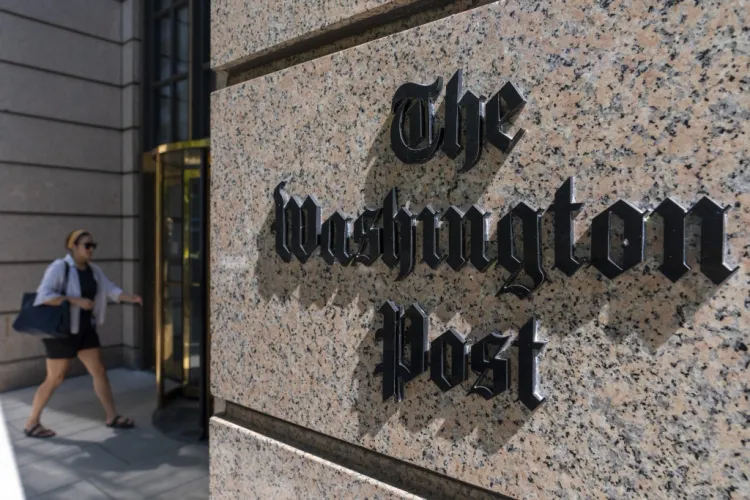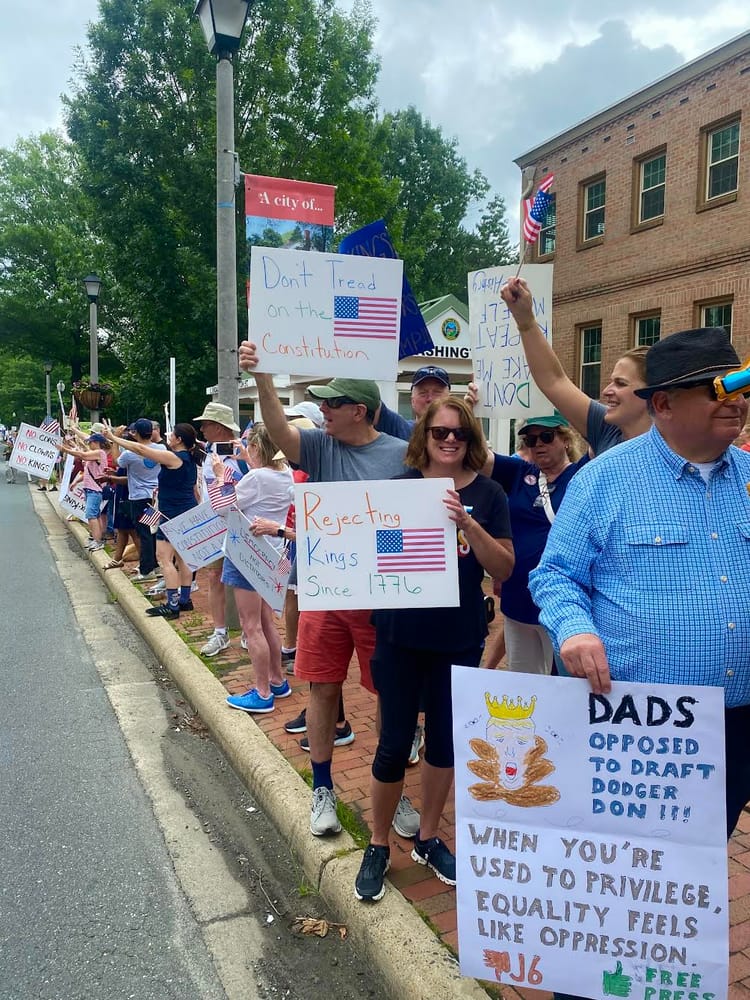Real Estate: City’s Housing Market Highly Competitive, Yet Regional Economic Slowdowns Likely

Is the City of Falls Church buffered from the winds of Washington, D.C.?
While the Little City remains one of the region’s priciest home markets – with excellent schools, restaurants, livability and walkability ratings, plus national attention as “the healthiest community in the United States – the City of Falls Church saw a 3.2 percent decline in its median “sold” price, dropping from $775,000 in 2024 to $750,000 in 2025, according to Fox Homes.
“This is a signal worth watching,” they report. “For a high-demand, low-inventory micro-market like Falls Church City, this softening may point to buyer hesitation at premium price points or a temporary market correction after years of aggressive appreciation.”
“The Falls Church housing market is very competitive,” Redfin reports. “Homes in Falls Church receive 3 offers on average and sell in around 46 days….” However, “The median sale price of a home in Falls Church [dropped] 1.5 percent since last year.”
“On average, homes in Falls Church sell after 46 days on the market compared to 24 days last year,” they continue. “There were 21 homes sold in February this year, up from 15 last year…. Homes sell in 18.5 days. Many homes get multiple offers, some with waived contingencies. The average homes sell for about 1 percent above list price and go pending in around 19 days. Hot homes can sell for about 4 percent above list price and go pending in around 4 days.”
Despite the strength and seeming resilience of the City’s home sales market, however, economic slowdowns in the broader region are likely to hit local home buying and selling in the near future.
A May 4 Bright MLS market report indicates the Washington, D.C. region saw a 15.2 percent year-to-year increase in new home listings to start the spring home buying season “which could be a signal that Federal government workforce cuts and return-to-the-office mandates are having an impact on the region’s housing market.”
Across the greater Washington, D.C. region, Bright MLS continues, “8.6 percent of all active listings last week had a price drop.”
Are federal job cuts and U.S. Department of Government Efficiency (DOGE) program eliminations responsible for the sudden surge of homes on the market at cheaper prices? MLS hedges, saying, “It is still difficult to separate out macro housing market trends from potential impacts of DOGE.” This despite acknowledging that “Listing activity has been stronger in the greater Washington, D.C. region than in most other parts of the Bright MLS service area, which suggests that DOGE is having an impact on market activity.”
Factors That Could 'Stall Home Purchases'
Real Estate News, however, provides a gloomier picture for the region’s housing market. “Expect a ‘mortgage rate roller coaster’ following [the Trump administration’s] new tariffs,” they warn. “Rates may drop in the short-term before inflation ramps up, but stock market volatility, higher prices and rising unemployment could stall home purchases.”
“The steep tariffs announced April 2 sent the stock market tumbling, cutting into consumer portfolios and potentially discouraging costly purchases like houses and cars, they wrote. “Investors gravitated toward bonds, a move that has lowered mortgage rates for now…. [while] the cost of a new home could still increase by $9,200 due to previous levies.”
The increased economic volatility stemming from the new U.S. global tariff walls “could affect the real estate market just as the spring home buying season gets underway,” the report continues, citing Regional Vice President of William Raveis Mortgage, Melissa Cohn, who argues the “huge boost in tariffs will set off a global trade war that will damage the economy in the short term.” While such turbulence might bring a drop in interest rates, “The bad news for the real estate market is that significant wealth is being lost in the equities markets and people will be loath to cash in right now," Cohn said, as reported by Real Estate News.
Further offsetting any benefits from interest rate cuts are new home construction costs arising from the tariffs. Buddy Hughes, chairman of the National Association of Home Builders (NAHB), reported survey results from members estimating the “average cost of a new home will increase by $9,200” as a result of expected tariff levies.
Economics team leader at Redfin, Chen Zhao, wrote in a blog post that while tariffs might force trade-deficit concessions, they’re likely to cause a rise in inflation and unemployment. “If the tariffs do remain in place, economists expect inflation to soar,” Zhao argues,” predicting the unemployment rate could jump to 5 percent if current trends continue.
“If inflation shoots up, Zhao said the Federal Reserve will have to decide whether this is a one-off inflationary impact or something that will linger and send the economy into a recession,” Real Estate News reported.
A Drag on the Housing Market
According to a May 5 Washington Post article, “President Donald Trump’s trade war is sending construction costs up, and interest rates are expected to stay high this year…. The faltering economy is starting to become a drag on the housing market.”
“Real estate agents, developers, home buyers and economists are all trying to make sense of which way trends are heading,” the Post continued. “Slower growth — the economy shrank at the beginning of 2025 — means interest and mortgage rates will probably stay high for the foreseeable future. Stock market swings and flagging consumer confidence are pushing buyers out of the market. President Donald Trump’s trade war is adding thousands to construction costs for new homes and remodels.”
So much market uncertainty is creating a “wait-and-see economy,” Robert Dietz, chief economist at NAHB told the Post. “A house is often a household’s single largest investment or asset, and buying or selling can be one of life’s biggest financial decisions. Entire budgets are structured around monthly mortgage payments or rent. So what happens if the housing market reverberates through the entire economy, and vice versa.”
“Experts look to the number of homes for sale or list prices as litmus tests for how the broader economy is faring. And conversely, housing affordability and availability are among the most direct ways people feel the economy in their daily lives. Keeping a close read on the market is especially key when a range of economic indicators are flashing warnings without clear answers as to what they mean,” the Post reported.
Downturns Tend to 'Bleed Quickly' into the Housing Market
“...Officials are warning that Trump’s trade war will send prices back up,” the Post continued. “The latest GDP figures marked the first contraction since early 2022, when the pandemic and supply chain snarls still had a grip on the U.S. economy. Economists and Wall Street analysts are on watch for signs of a recession, especially if employers start pulling back on hiring and investment or lay people off. Downturns often bleed quickly into the housing market, especially if spikes in unemployment cause people to fall behind on their mortgages.”
President of the DC Association of Realtors, Sam Medvene, warns that we won’t know until the end of September, 2025 whether massive cuts in the federal government “spur more people to sell their homes,” the Post reported, since federal workers who received buyouts won’t stop receiving pay until then.
Even more alarming for the City of Falls Church, the Washington Post reported May 9 that the “D.C.-area economy [is starting] to show deep impacts of federal spending cuts…. Unemployment claims are rising and consumers are pulling back on spending, sparking worries of an economic slump in the region on par with the one that occurred during the pandemic.”
Not only did the District lose its Moody’s triple-A bond rating when $1 billion in federal funding were cut by the Trump administration – perhaps "inadvertently"? – but the number of unemployed residents in the City rose 12.2 percent in February compared to a year ago, new unemployment claims rose 167 percent, and among federal workers, jumped from just 8 in Feb. 2024 to 258 in Feb. 2025.
Residents of the City of Falls Church should not feel buffered from downward trends in the District’s economy.
"More than 17 percent of the region’s employed residents work for the federal government, including 22 percent in D.C., according to the Metropolitan Washington Council of Governments," per the Post. Many more area residents work for contractors and other employers that depend on the government for business."
Neighboring Fairfax County is already experiencing heavy impacts. “In Fairfax County, Virginia, unemployment jumped from 2.2 percent in December to 3.2 percent in March,” the Post reported. ‘And we haven’t seen the worst of it yet,’ said Jeff McKay, chairman of the Fairfax County Board of Supervisors, noting the lagging data.”
“McKay said this economic crisis is probably the worst he has seen in 18 years on the board. ‘It’s neck and neck with Covid,’ he said, per the Post. “I think it’s worse than Covid because we’re not going to get any help.”
And just as surrounding counties contain large numbers of federal workers and contractors subject to massive layoffs and budget cuts, so too does the City of Falls Church. In fact, the City’s U.S. Congressional House Representative, Don Beyer, “represents a Northern Virginia congressional district with one of the largest concentrations of federal workers in the U.S.”
So, be prepared for harsh winds to blow.
By Christopher Jones






Member discussion